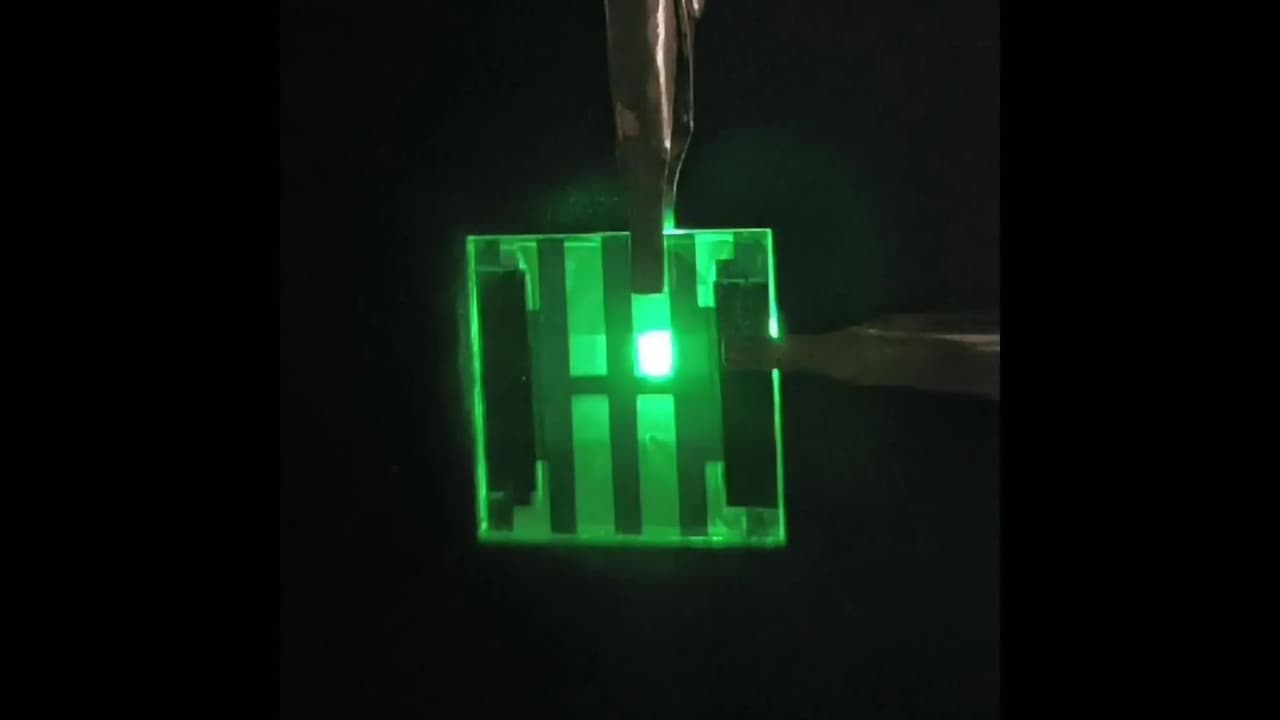Researchers create a paper-thin quantum dot LED that mimics sunlight. This energy-efficient, eye-friendly light enhances color accuracy, reduces eye strain, offers promising applications for displays, indoor lighting, and human-centric environments.
Lighting technology is entering a new era thanks to an ultra-thin, paper-like LED developed by researchers in China. This quantum dot LED (QLED) emits a warm, sunlike glow that closely mimics the full spectrum of sunlight, promising safer, more natural indoor lighting and next-generation displays. The breakthrough could improve how we illuminate our homes, workplaces, and devices while reducing eye strain and sleep disruption. The study was published in ACS Applied Materials & Interfaces.
Engineering Sunlight With Quantum Dots
Traditional indoor lighting often lacks the color balance of natural sunlight, leaving objects appearing dull or unnatural. To solve this, scientists engineered red, yellow-green, and blue quantum dots, tiny semiconductor particles that emit light when electricity passes through them. Coated with zinc-sulfur shells, these quantum dots were blended in precise ratios to recreate the full sunlight spectrum, especially the yellow and green wavelengths where sunlight is strongest.
This meticulous engineering allows the QLED to produce light that is both warm and true-to-life, improving the color rendering index (CRI) to over 92%. Objects illuminated by these LEDs appear more natural, making them ideal for indoor environments, digital displays, and even applications like indoor horticulture where light quality is crucial.
Ultra-Thin Design, High Efficiency
One of the most striking aspects of this LED is its paper-thin design, achieved by layering conductive polymers, the quantum dot blend, metal oxide particles, and a top coating of aluminum or silver on an indium tin oxide substrate. The total thickness of the active quantum dot layer is only a few dozen nanometers—far thinner than conventional LEDs. This design not only saves space but also opens possibilities for flexible, lightweight lighting panels that can be integrated into walls, devices, or wearable technology.
The LEDs operate efficiently at relatively low voltages. Initial tests at 11.5 volts produced the brightest, warmest light, while optimization allowed some devices to reach peak brightness at just 8 volts, making them energy-efficient and suitable for consumer electronics, indoor lighting, and adaptive displays.
Benefits for Health and Well-Being
Exposure to harsh artificial light at night can disrupt sleep cycles and cause eye strain. These sunlike QLEDs emit more red wavelengths and lower blue wavelengths, which is gentler on the eyes and less likely to interfere with circadian rhythms. By closely replicating natural sunlight, the LEDs provide a more comfortable visual experience, whether used in homes, offices, or on electronic displays.
Future Applications and Research
Beyond household lighting, these QLEDs could revolutionize digital screens, smart lighting systems, and horticulture lighting. The technology’s flexibility, efficiency, and natural color output make it a promising solution for various industries seeking eco-friendly, human-centric lighting solutions.
The research was funded by the National Natural Science Foundation of China, the Natural Science Foundation of Anhui Province, and the Major Science and Technology Special Project of Zhongshan City. As the field of quantum dot technology advances, these ultra-thin LEDs may soon replace conventional bulbs and screens, bringing sunlight indoors like never before.
